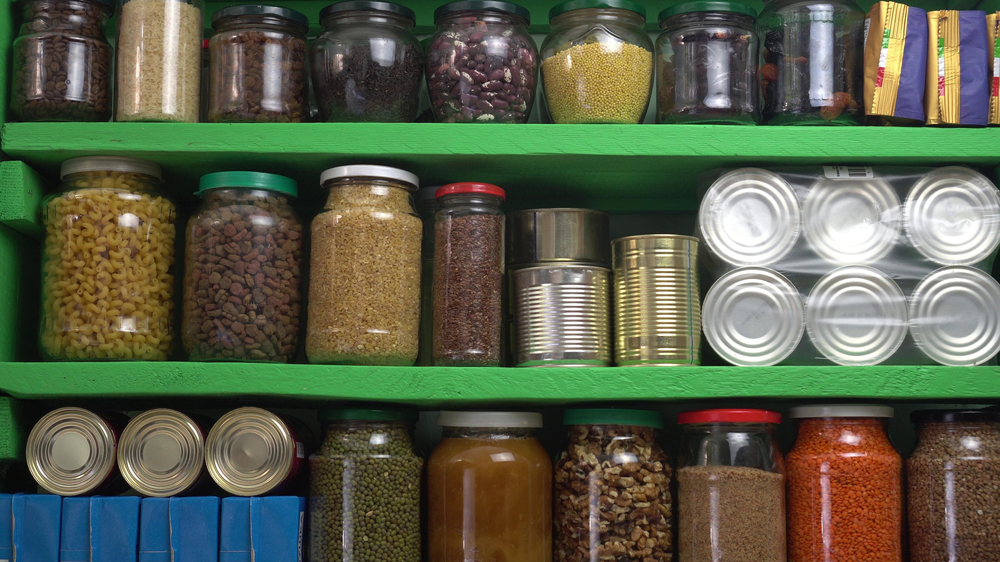Last Updated on November 6, 2022 by admin_hunter
The reality is that many of us live pretty comfortable lives so we really dont have to think about how to store survival foods. We’re not in a position where we need to worry about having enough food in the event of an emergency. But it’s always better to be prepared than not, so I thought it would be fun to share some tips on how to store your survival foods properly so that they last as long as possible. Plus, it could save you a ton of money!
Why Store Survival Foods?
Why store survival foods?
Storing survival foods is a great way to ensure that you and your family will always have food on hand in case of an emergency. It’s also an excellent way to be prepared for any natural or manmade disaster. If you’re interested in storing survival food, check out the tips below:
First, you’ll want to decide what kind of survival food you’re going to store. The most common types are canned goods, dried staples (rice and beans), and freeze-dried meals. You can also purchase freeze-dried fruits and vegetables if you’d like a more nutritious diet.
Questions About How to Store Survival Foods
- How much should I store?
You should store enough food to last you at least three months. That’s about how long it usually takes for an emergency, like a hurricane or wildfire, to pass.
- How much water should I store?
Your family needs at least one gallon of clean water per person per day (3-day supply). That’s 1/2 gallon for drinking and cooking and another 1/2 gallon for hygiene purposes (washing hands, etc.).
How do I use my water storage? You can use your water storage in any way that you would normally use tap water.
Basics for Storing Survival Foods
You can store survival foods for up to 20 years, but there are some important considerations you should make. The type of food and its packaging are both extremely important.
Foods that contain a lot of sugar will last longer than those high in water content (fruits, vegetables). Protein and fiber-rich foods will not store as long as the other two groups because they spoil more quickly.
Try to avoid canned goods, as they do not last as long. If you can find a means of storing your food in the freezer, it will last longer. This is especially important if you live in an area that experiences extreme heat or cold.
Best Way to Store Survival Foods
It’s important to store food in a dark, cool space. Storing food in a dark, cool place will extend its shelf life and keep it safe from mold and other contaminants.
Food should be stored at temperatures between 50 and 70 degrees Fahrenheit (10-21°C). If you have excess heat inside your home during the summer months, consider installing an air conditioning unit specifically for your food storage area so it can maintain this temperature range all year long.
Storing foods in a dry place is also important to prevent spoilage and mold growth. When moisture comes into contact with food that contains sugars or starches (often present in fruits), it begins breaking down these nutrients and speeding up processes like fermentation—an undesirable process that results in off flavors as well as leads directly towards bacterial growth!
When storing food in a dry place, it’s important to make sure the area is well-ventilated. When moisture comes into contact with air, it can evaporate and leave behind all of its contaminants such as mold spores or dust mites.
How to Vacuum Seal Food
There are a number of ways to seal your food for long-term storage, but the most popular and effective method is with a vacuum sealer. Vacuum sealers come in several different types, including handheld devices and countertop machines that can handle up to 300 feet of bag material at once. These devices compress air from the bag using heat and then use an airtight seal to close it shut.
To properly use one, first place your food inside of plastic bags (we recommend picking up some BPA-free ones) before placing them into the chamber of the machine. Next, press down on the lid until you hear a click—this indicates that it’s locked in place—and begin compressing air out of your bag by pressing down on its handle until all excess air has been removed from inside and outside of it. Finally, remove everything from within both halves before sealing them shut individually using double sided tape or glue if necessary; this will prevent any moisture from entering into contact with any part of either side which could lead to spoilage if left unchecked!
Remember: never overfill bags when using these products since they won’t work properly unless fully emptied after each use! And don’t forget about safety precautions either; always wash hands thoroughly before touching any surfaces other than food items during preparation periods as well as after handling raw meat products like chicken breasts etcetera because bacteria tends cling easily onto hands when exposed directly through contact such as during cutting processes where juices drip directly into wounds left open by careless cuts made while working quickly under pressure due not having proper equipment available such as knives sharp enough yet still requires some skill level knowledge which isn’t always easy especially when trying something new.”
Money in the Bank?
Properly stored basic survival foods are like money in the bank. They can help you save money and ensure that you have food on hand when you need it.
If you have basic survival foods on hand, you don’t have to worry about going hungry or spending money on groceries. Having a supply of food that will last for years means that you can save money and time by not having to shop for food every week.
How to Store Your Survival Foods So They Remain Fresh
It is important to know how to store your survival foods so they remain fresh and useful as long as possible.
The most common storage methods include:
- Dry storage, which uses containers or packaging that protects the food from moisture and other elements. Some examples are buckets, plastic bags, or metal cans.
- Lidded buckets can be used for storing dry goods that can’t be damaged by water exposure over time (like grains). These buckets must be kept in a cool area such as an attic or basement where temperatures remain between 50-70 degrees Fahrenheit at all times.
Freezer storage is ideal for storing non-perishable items that can withstand cold temperatures. This includes canned goods, dried meats and fruits, as well as some dairy products like cheese or milk. The freezer should be set to 0 degrees Fahrenheit or below for best results.
Conclusion
I hope this article has helped you understand the importance of storing survival foods, as well as what steps to take in order to store them properly. It’s crucial that we all be prepared for emergencies when they happen, so make sure that you have some type of food storage plan in place. Remember: just because someone else doesn’t think something will happen doesn’t mean it won’t!

